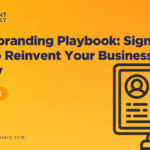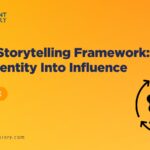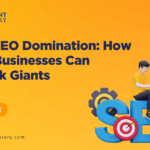Introduction: Why Design is More Than Looks
Most people think of design as “making things look good.” But in 2025, design is more than aesthetics — it’s about psychology and behavior.
Every color, font, layout, and visual cue influences how users feel and what actions they take. Great design is rooted in science, not guesswork — and when done right, it transforms a website from a digital brochure into a conversion engine.
This guide explores the design psychology principles that drive conversions, showing how brands can turn visuals into influence and growth.
The Psychology of First Impressions
Humans form judgments in 50 milliseconds.
What Users Decide Instantly
- Is this trustworthy?
- Is it relevant to me?
- Is it easy to navigate?
📊 Stat: 94% of first impressions of websites are design-related, not content-related.
This means design psychology isn’t a “nice-to-have.” It’s the first step in building credibility and conversions.
Principle 1: Color Psychology
Colors trigger emotions and influence perception.
Common Color Associations
- Blue: Trust, security, calm (common in finance & tech).
- Red: Urgency, passion, danger (used in sales and clearance).
- Green: Growth, health, stability (popular in wellness & eco brands).
- Black: Luxury, sophistication (common in high-ticket products).
📊 Pro Tip: Use bold colors for CTAs (contrasting with brand palette) to make them pop without breaking consistency.
Principle 2: Typography as Personality
Fonts communicate tone.
Examples
- Serif fonts (e.g., Times, Georgia): Traditional, trustworthy.
- Sans-serif fonts (e.g., Helvetica, Arial): Modern, clean.
- Script fonts (e.g., Pacifico): Creative, personal.
Consistency matters. A finance company using playful script creates dissonance; a creative agency might thrive on it.
📊 Stat: Clear typography increases content comprehension by 40%.
Principle 3: The Power of Visual Hierarchy
Humans scan, not read. Design must guide the eye.
Tools of Hierarchy
- Size: Bigger = more important.
- Contrast: Bold colors or shapes draw focus.
- Positioning: Top-left and above-the-fold areas grab attention first.
Example: Placing a strong CTA (“Book Your Free Strategy Call”) above the fold increases conversions by up to 70%.
Principle 4: Cognitive Load & Simplicity
Too many choices overwhelm users.
- Hick’s Law: The more choices, the longer decision-making takes.
- Rule of 3: Limit options on a page to three core actions.
- Whitespace: Creates breathing room and focus.
Example: A SaaS landing page with one core CTA outperforms cluttered pages with multiple offers.
Principle 5: Trust Signals and Social Proof
Design can either build or erode trust.
Trust-Building Elements
- Professional photography (not stocky clichés).
- Testimonials with faces.
- Logos of clients or certifications.
- Secure payment icons and HTTPS signals.
📊 Stat: Adding trust badges increases conversions by 42%.
Principle 6: Motion and Microinteractions
Subtle animations and feedback create engagement.
- Hover effects guide users intuitively.
- Animated progress bars reduce bounce rates.
- Microinteractions (button clicks, scroll effects) create delight.
📊 Pro Tip: Use motion sparingly. Too much animation creates distraction and slows performance.
Case Studies: Design Psychology in Action
Case 1: E-commerce Apparel Brand
Before: Cluttered homepage with mixed fonts and no clear CTA.
After: Clean sans-serif typography, whitespace-driven layout, single bold CTA.
Result: Conversion rate increased by 32%.
Case 2: SaaS Startup
Before: Overwhelming product feature page.
After: Simplified 3-column layout with visual hierarchy and CTA at each stage.
Result: Trial sign-ups doubled in 60 days.
Case 3: Local Dentist
Before: Stock photos and generic “Contact Us” button.
After: Real staff photos, green/white calming palette, “Book Appointment” CTA.
Result: 47% increase in appointment bookings.
The Future of Design Psychology (2025 and Beyond)
- AI-Generated Personalization: Websites adapting design based on user behavior.
- Dark Mode First: More users expect toggleable themes.
- Neuro-Design: EEG and biometric feedback driving creative decisions.
- Minimalism with Depth: Clean design layered with storytelling visuals.
How Resilient Mastery Uses Design Psychology
At Resilient Mastery, design isn’t decoration — it’s strategy. Our team leverages:
- Senior Level Creative Expertise for branding and visuals.
- Top-Tier Marketing Systems for aligning design with performance.
- AI Integrations for personalization and adaptive user journeys.
The result: designs that not only look stunning but convert consistently.
Conclusion: Turning Visuals Into Conversions
Design psychology is the science of influence. It’s how visuals shape perception, build trust, and guide users toward action.
Brands that master design psychology don’t just impress — they convert, engage, and grow.
Want to apply design psychology to your brand? Resilient Mastery specializes in creating visuals that influence and convert.




